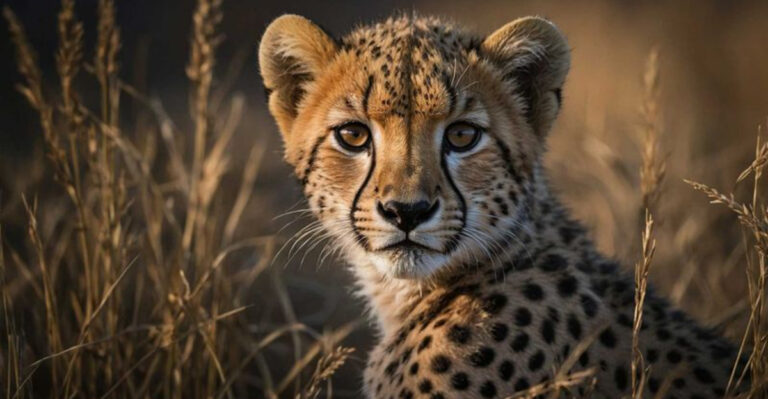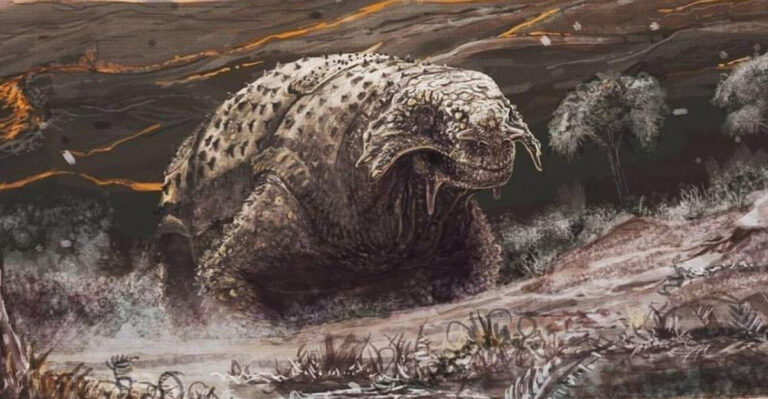Older Than Dinosaurs: Meet The Turtle Species That’s Survived For 200 Million Years
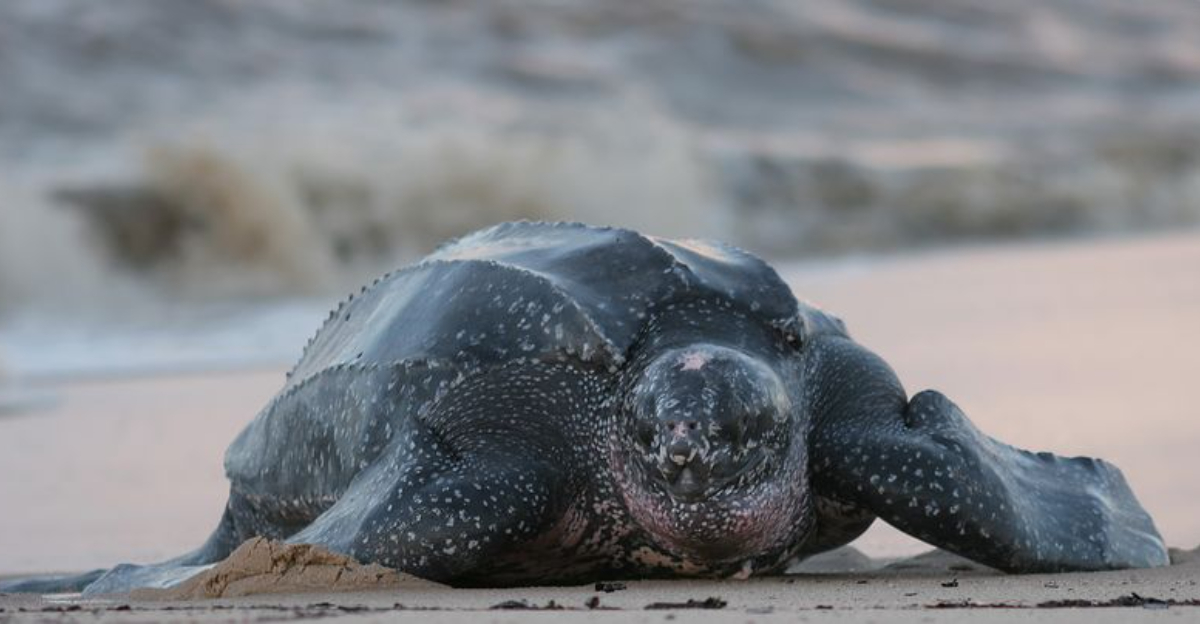
When dinosaurs ruled the Earth, an extraordinary creature was already gliding through ancient oceans – the leatherback sea turtle.
These remarkable reptiles have witnessed the rise and fall of countless species while remaining virtually unchanged for over 200 million years.
Today, these living fossils continue their prehistoric journey through our modern oceans, carrying ancient wisdom in their genetic code and offering us a window into Earth’s distant past.
1. Ancient Mariners Of The Deep
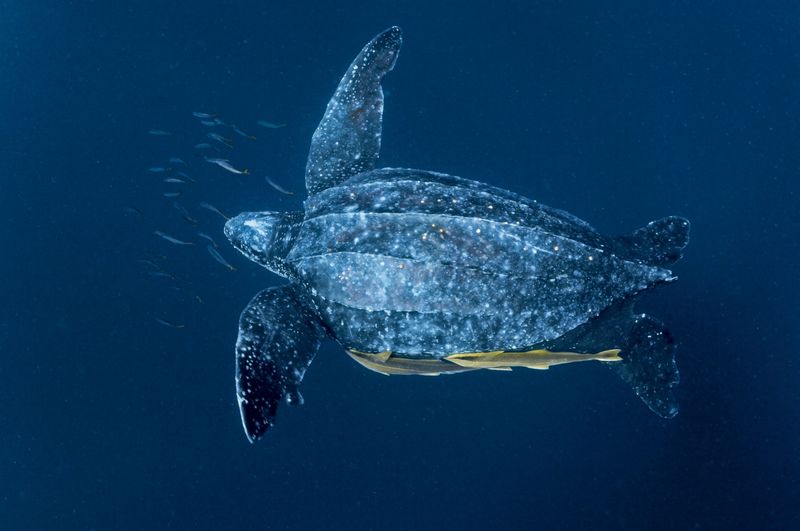
Leatherback sea turtles first appeared during the Triassic period, making them older than most dinosaurs! Their ancestors swam alongside prehistoric marine reptiles like plesiosaurs and ichthyosaurs.
Fossil evidence shows that leatherbacks have maintained nearly the same body structure for 200 million years. They survived the mass extinction that wiped out the dinosaurs 65 million years ago.
Scientists believe their remarkable adaptability and ocean-going lifestyle helped them weather catastrophic events that eliminated countless other species throughout Earth’s history.
2. Giants Among Turtles
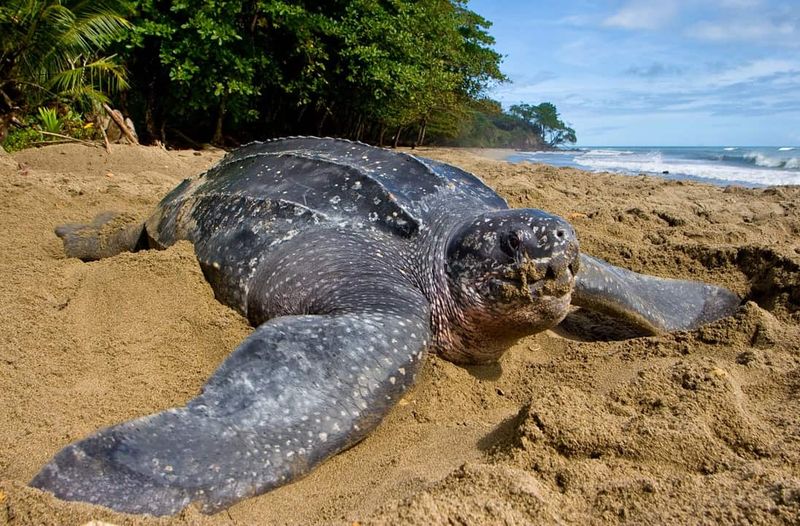
Tipping the scales at up to 2,000 pounds and stretching over 7 feet long, leatherbacks claim the title of largest turtles on Earth. Their massive size is unmatched in the turtle world!
Unlike their hard-shelled relatives, leatherbacks sport a unique leathery carapace – a flexible shell reinforced with thousands of tiny bone plates. This distinctive feature gives them their name and sets them apart from every other living turtle species.
Their enormous flippers can span 9 feet from tip to tip, propelling these marine giants through ocean waters with incredible efficiency.
3. Record-Breaking Deep Divers
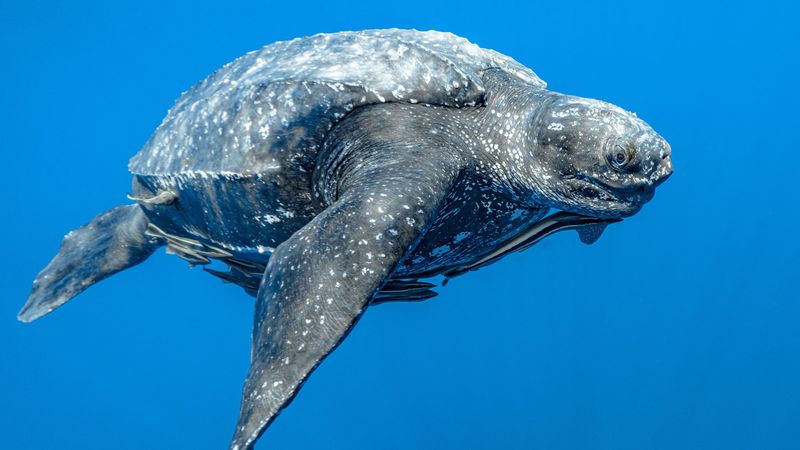
Hold your breath for this one! Leatherbacks can plunge deeper than any other turtle species, descending to ocean depths over 4,000 feet – deeper than many whales can dive!
These remarkable reptiles can hold their breath for up to 85 minutes underwater. Special adaptations in their muscles store oxygen more efficiently than most other animals, allowing these extended deep-sea journeys.
Scientists tracking leatherbacks have recorded them diving repeatedly throughout the day and night, often completing over 30 significant dives within 24 hours as they hunt for their favorite food.
4. Marathon Swimmers Of The Ocean
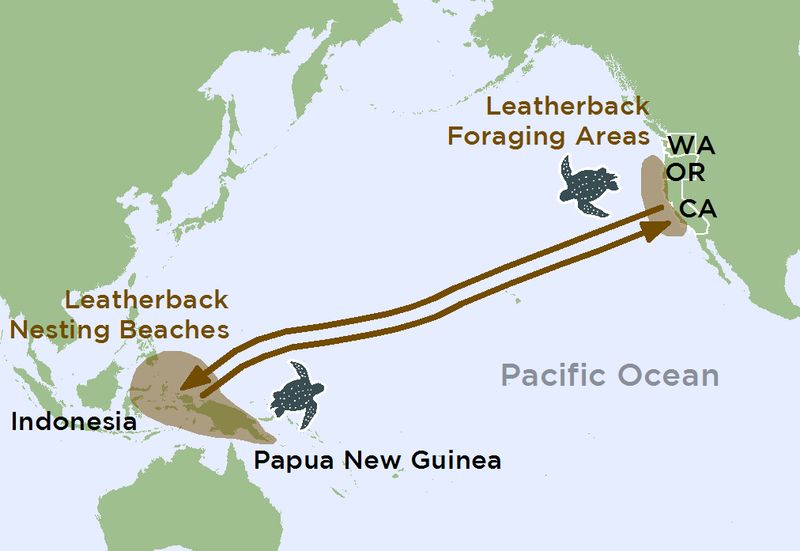
Leatherbacks are nature’s marathon champions, traveling over 10,000 miles annually between feeding and nesting grounds. They cross entire ocean basins, navigating with Earth’s magnetic field as their guide.
One tracked leatherback swam from Indonesia to Oregon – a journey of nearly 12,000 miles! Their powerful front flippers, evolved specifically for long-distance swimming, propel them through water with remarkable efficiency.
Unlike most reptiles, leatherbacks maintain body temperatures up to 18°F warmer than surrounding water. This unique ability allows them to venture into frigid seas where other turtles can’t survive.
5. Jellyfish Specialists
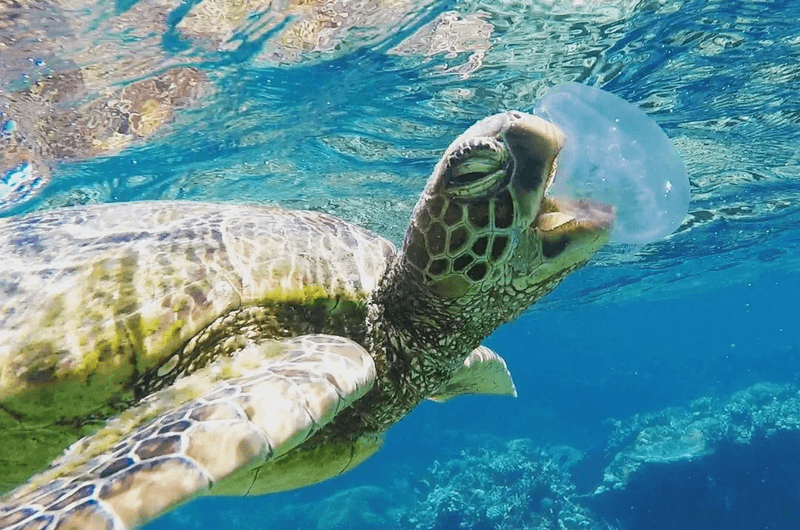
A leatherback’s menu features one main dish – jellyfish! These specialized hunters consume their body weight daily in these gelatinous creatures, helping control jellyfish populations across ocean ecosystems.
Their throats contain backward-pointing spines called papillae that trap slippery jellyfish and prevent them from escaping. Without these efficient predators, jellyfish blooms could overwhelm marine environments.
Tragically, leatherbacks often mistake floating plastic bags for their jellyfish prey. This confusion leads to thousands of turtle deaths annually, making plastic pollution one of their greatest threats.
6. Temperature-Determined Babies
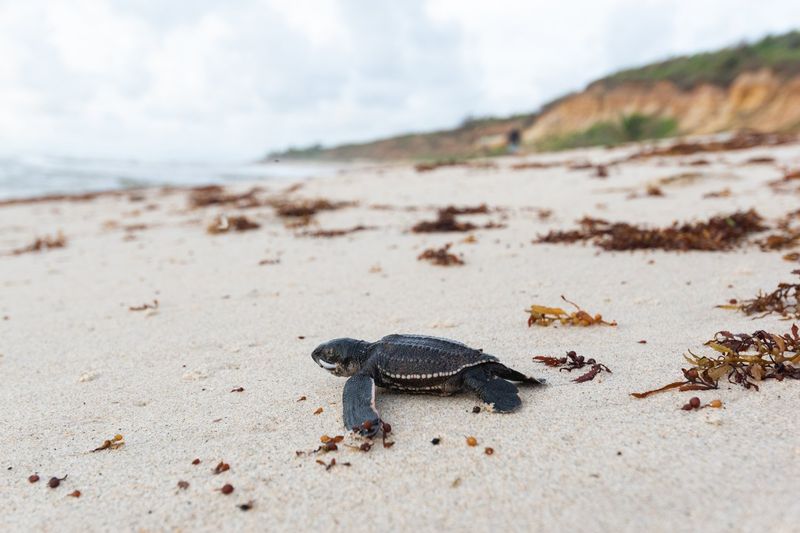
Gender reveal? For leatherbacks, it’s all about temperature! The warmth of the sand where eggs incubate determines whether hatchlings will be male or female – cooler nests produce males, while warmer sands create females.
This temperature-dependent sex determination makes leatherbacks particularly vulnerable to climate change. Rising beach temperatures could potentially create all-female generations, threatening the species’ future.
Mothers dig deep nests in tropical beaches worldwide, laying around 80-100 eggs per clutch. They’ll create multiple nests in a single season, with eggs incubating for approximately 60 days before tiny hatchlings emerge.
7. Built-In Heating System
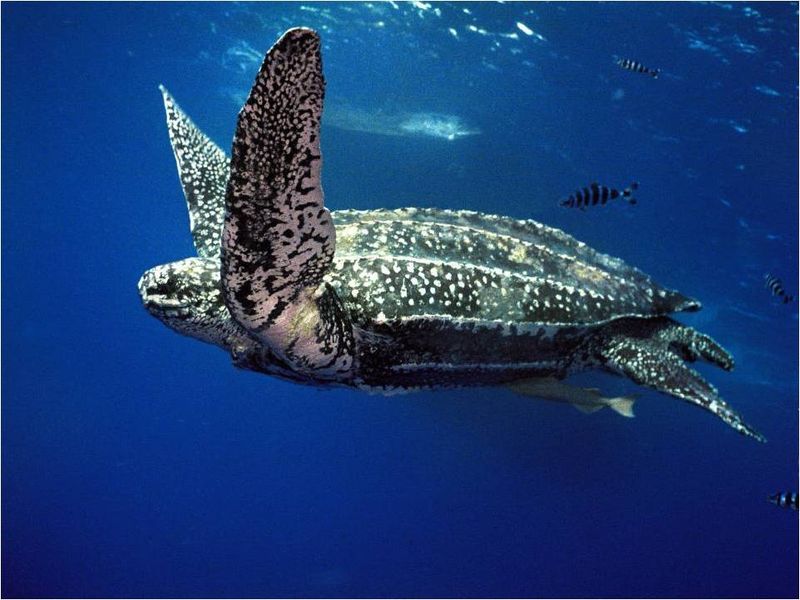
Leatherbacks possess a remarkable superpower – they’re warm-blooded reptiles! Unlike virtually every other reptile on Earth, these turtles maintain internal body temperatures significantly warmer than the surrounding water.
Special adaptations including counter-current heat exchangers, high oil content in their tissues, and a large body mass help them retain heat generated by their powerful swimming muscles. Their leathery shell also acts as insulation against cold waters.
This internal heating system enables leatherbacks to venture into frigid northern and southern oceans where other sea turtles can’t survive, expanding their range to nearly pole-to-pole.
8. Tears Of The Ocean
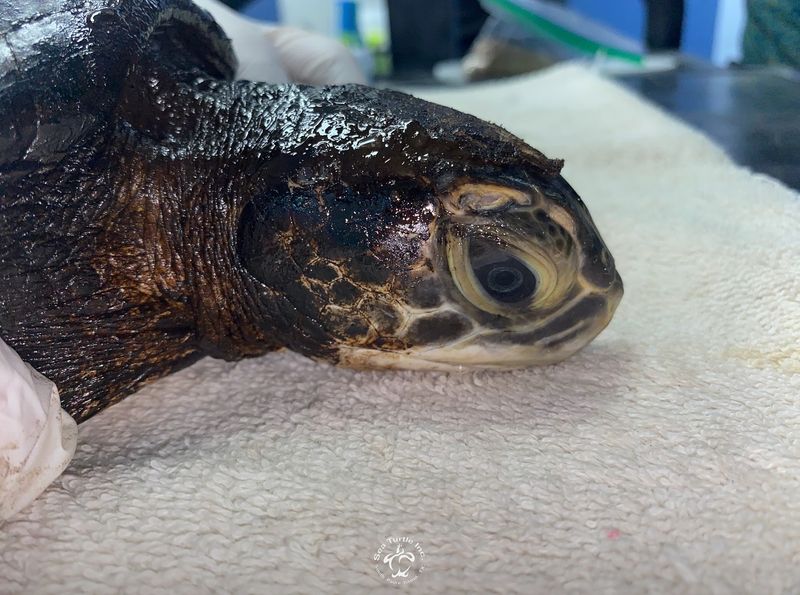
Female leatherbacks appear to cry while nesting, but these “tears” serve a crucial purpose. Special glands near their eyes remove excess salt from their bodies while protecting their eyes from sand during the nesting process.
After spending their entire lives in saltwater, these specialized salt glands prevent leatherbacks from becoming dehydrated. The same adaptation helps them process the jellyfish they consume, which have nearly the same salt content as seawater.
This salt excretion system is so efficient that leatherbacks can drink seawater directly – something that would kill most land animals through dehydration.
9. Beach Memory Masters
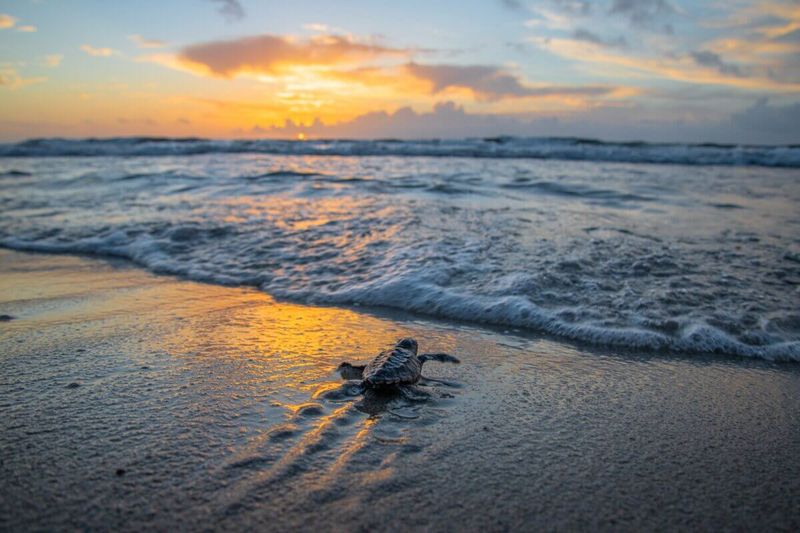
Leatherbacks possess an extraordinary homing ability that brings females back to their birth beaches decades later. Using Earth’s magnetic field as a map, they navigate thousands of miles to return to the exact shoreline where they hatched!
Scientists believe they imprint on their natal beach’s unique magnetic signature as hatchlings. This impressive navigational memory guides them across featureless ocean expanses with remarkable precision.
Some populations show incredible site fidelity, with females returning to nest on beaches just a few miles from where they were born, despite spending 30+ years roaming the open ocean.
10. Pressure-Proof Design
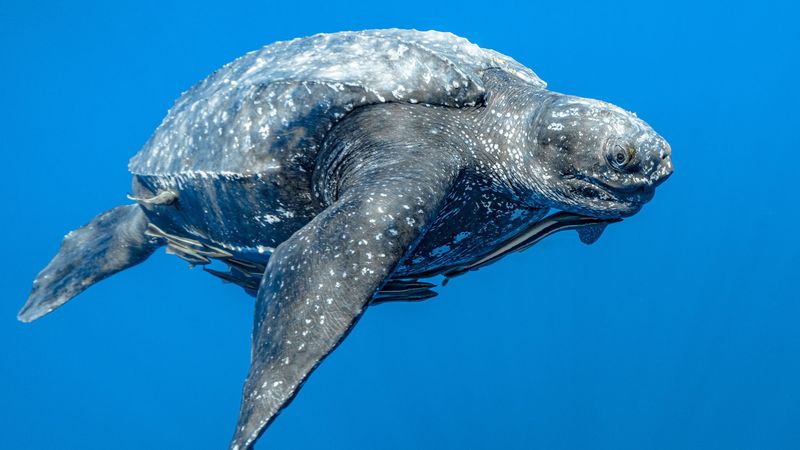
Leatherbacks have evolved extraordinary adaptations for withstanding crushing deep-sea pressures. Their flexible shell can actually collapse slightly during deep dives, preventing damage that would shatter a rigid turtle shell!
Their lungs can completely collapse during deep dives and reinflate when they resurface. This prevents the bends – a decompression condition that affects human divers who ascend too quickly.
Even their blood contains special adaptations that allow oxygen to be stored and transported efficiently under extreme pressure. These remarkable features let leatherbacks hunt in the ocean’s twilight zone, where few other air-breathing animals dare venture.
11. Speed Demons Of The Sea
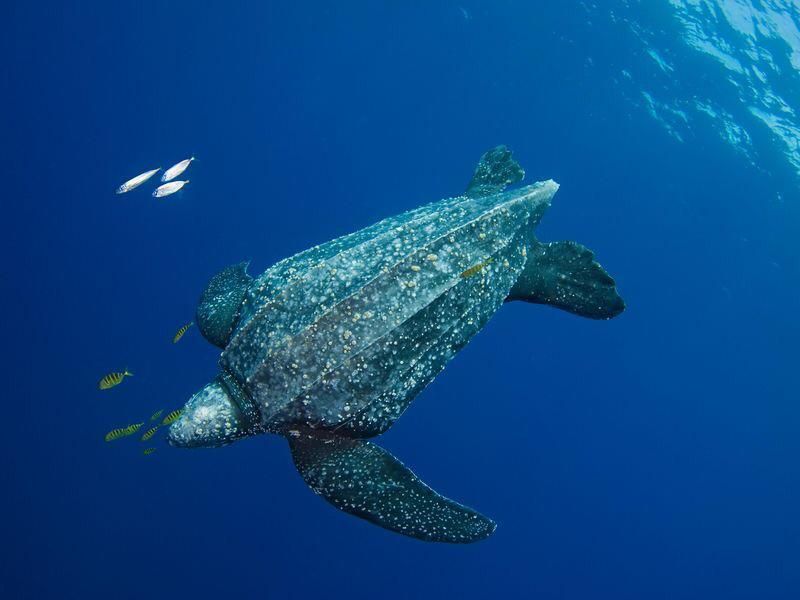
Leatherbacks are the fastest reptiles in the ocean, clocking speeds up to 22 mph during short bursts! Their teardrop-shaped bodies create minimal drag, while powerful front flippers generate thrust like airplane wings.
Unlike other sea turtles with hard shells, the leatherback’s flexible carapace can actually change shape slightly during swimming. This hydrodynamic design reduces water resistance and allows for more efficient movement through the water.
Their incredible speed helps them escape predators like killer whales and sharks. Young leatherbacks grow quickly – reaching adult size faster than any other turtle species – another adaptation that improves survival odds.
12. Critically Endangered Giants
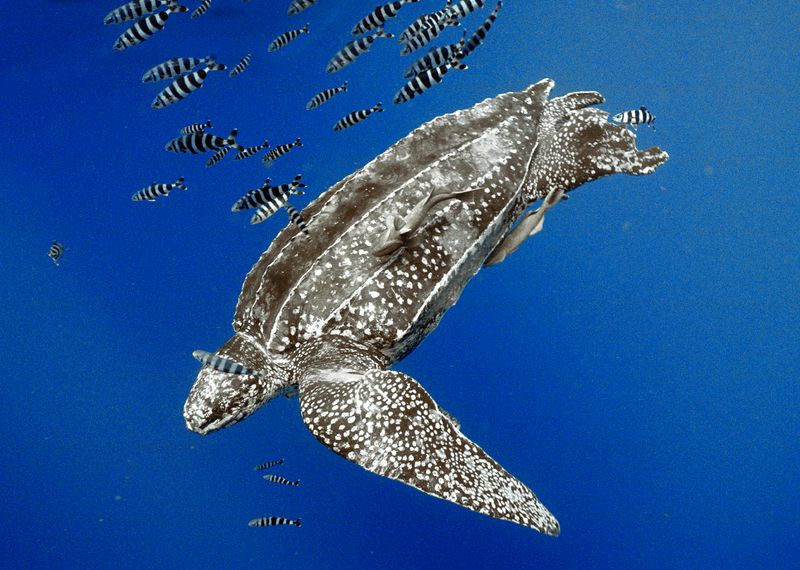
Despite surviving for 200 million years, leatherbacks now face their greatest challenge – human activity. Pacific populations have declined by 95% in just 40 years, pushing these ancient mariners toward extinction.
Plastic pollution, fishing gear entanglement, coastal development, egg harvesting, and climate change all threaten their survival. A single piece of plastic can kill a leatherback when mistaken for jellyfish prey.
Conservation efforts include beach protection programs, fishing gear modifications, and international agreements to safeguard migration routes. Without significant intervention, these prehistoric survivors might disappear within our lifetime – an extinction entirely preventable through human action.
13. Cultural Significance Across Civilizations
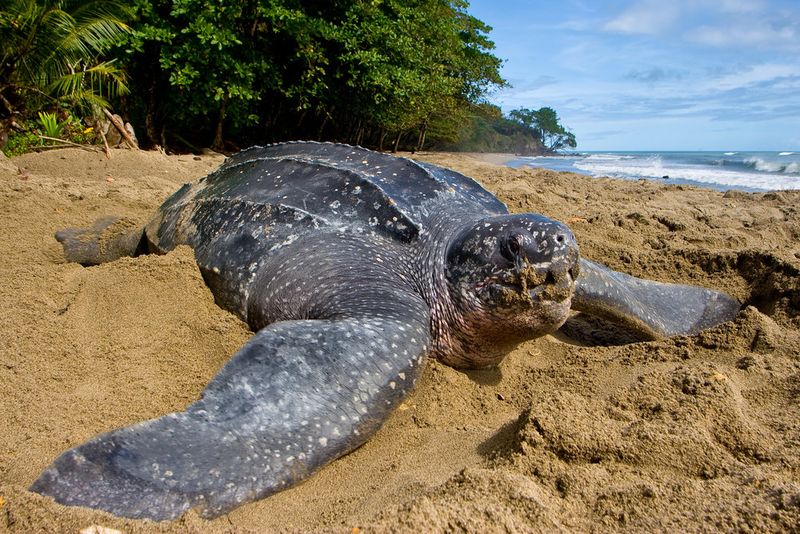
Leatherbacks have fascinated humans throughout history, appearing in the art and mythology of coastal cultures worldwide. Ancient Mayans depicted these turtles in sacred carvings, while Pacific Islanders featured them in creation stories.
Indigenous peoples developed sustainable harvesting practices that allowed turtle populations to thrive for thousands of years. Many traditional communities considered leatherbacks sacred beings deserving of respect and protection.
Today, ecotourism focused on nesting leatherbacks provides economic alternatives to egg harvesting in developing nations. This cultural connection offers hope for conservation as communities work to protect their natural heritage.



